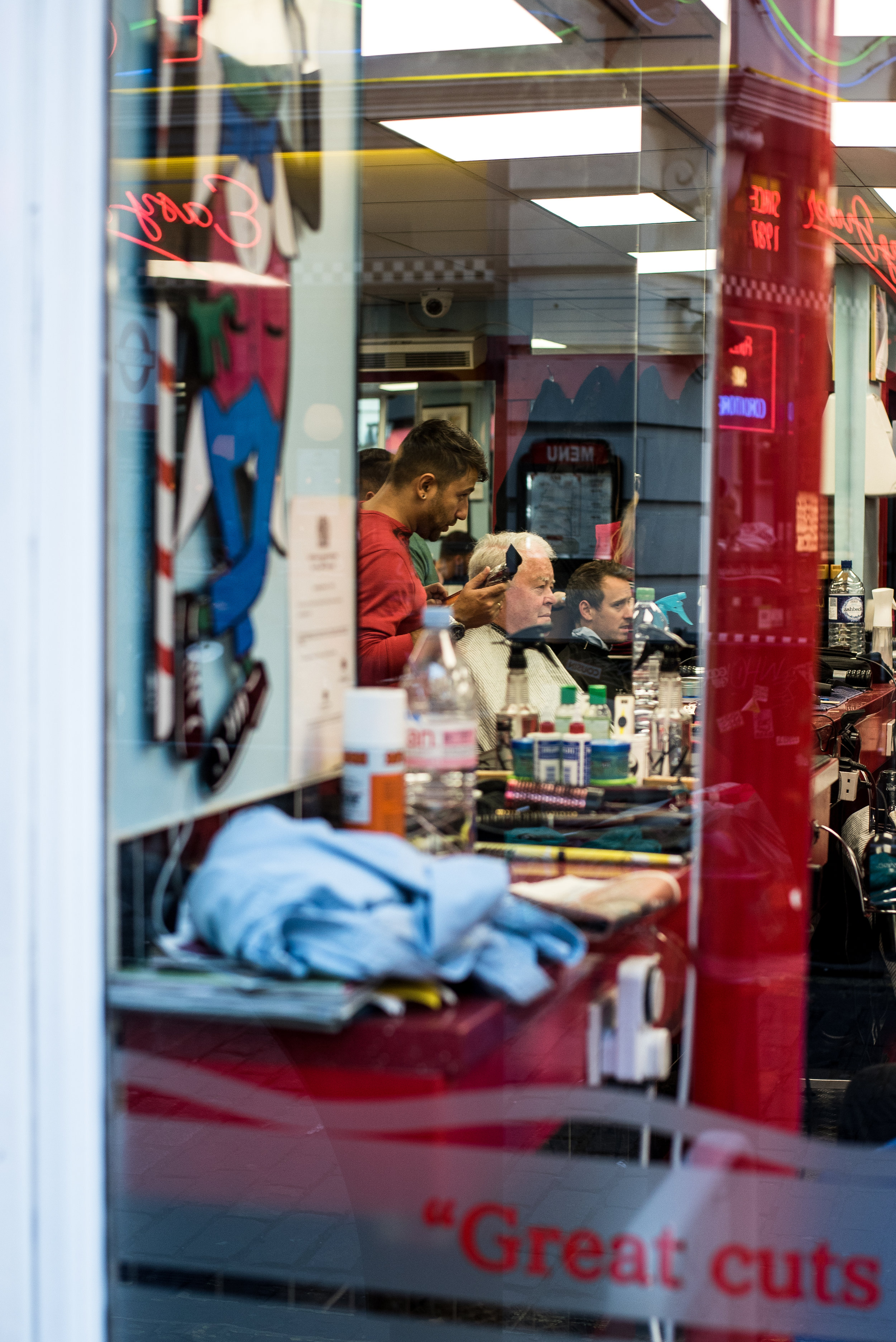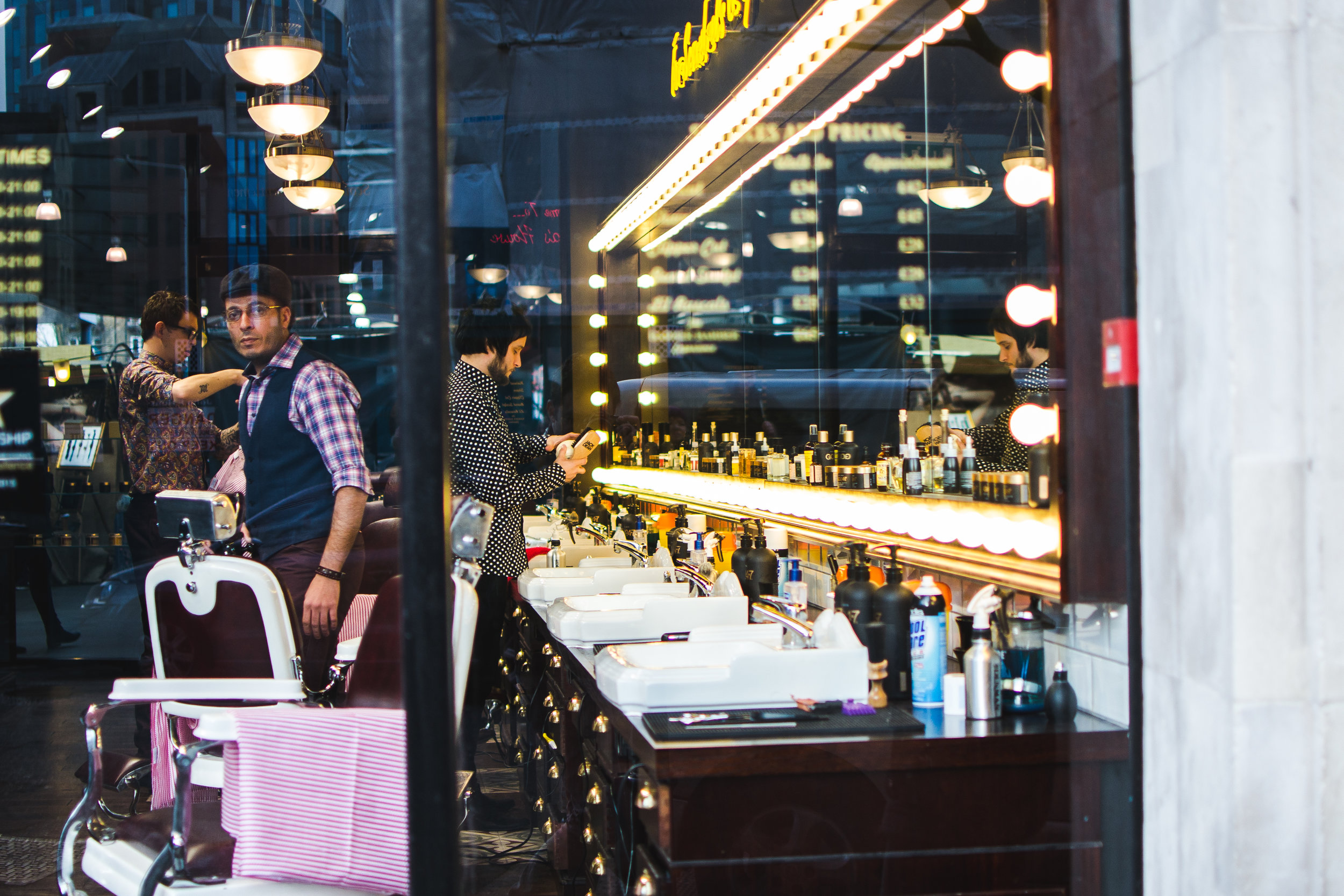Since Donald Trump’s inauguration on the 20th of January, multiple demonstrations have cropped up across the world to voice their opposition against Trump’s brand of politics. Mehmet Hassan found out how the London event shaped up.
The roads are glimmering from the early morning rain. The sunlight emerging through darkened clouds reflects back and the crystal clear air chills to the reality of what is happening across the Atlantic Ocean. It still seems like fantasy. The daily mundanity of life seems to cast over the cold reality of the wider world changing to a less tolerant place.
I am told by a beanie wearing man that entering Grosvenor Square will cost me a pound. “You can't just stroll in here and take pictures mate, you have to wear your badge on your chest.” I retort that I would be happy to contribute and pay up. So we exchange a pound for a badge, and my entrance to this public garden is approved. Yet I can’t help but wonder the validity of my pound’s power to admit me into this arena; after all this is a public protest.
The garden paths are wet and downtrodden with mud. An estimated 40,000 people will have joined to protest, to witness, to say no to division, and to let their voices be heard for now and for history. The grass that is increasingly trampled upon and pushed deep into the undersoil I imagine is grateful for the glowing sun above. I know I am feeling the gratitude of the rain sparing us on this important day.
Speeches echo throughout the park. Each threatening our politicians legitimacy should they accept Trump’s visit to these lands. The excitable crowd, responds to each statement with uproarious cheer and applause. Lindsey German, of the Stop the War Coalition excites the crowd with her message to Theresa May: “Do not dare follow Donald Trump or you will be out of office and he will be out of office as well. If he tries to come here we will stop him every step of the way.”
The sympathies echo the near two million signatories supporting the petition against Trump’s state visit. Yet I have little faith that the petition I signed last week will result in Trump being bared from these shores. The reality is Trump is the 45th president of the USA and he will come. And May will remain Prime Minister. Hours, weeks and months may be a lifetime in politics, yet the reality of such rhetoric to incite progress is a relative snails pace.
Yet the duty to shout against this madness and to remain on the correct side of history — to join marches and sign petitions — is a base necessity to keep our head above the tide of intolerance.
Banners of all colours, shapes and sizes catch the gentle blowing of the wind. Their diversity a candle to the diversity Trump stands against. People of all colours and nationalities are in attendance too, walking united against Trump’s unfettered divisive rhetoric. I am amazed as a journalist that I am not obliged to state ‘allegedly’, ‘arguably’, or quote an unnamed source when describing the controversial policies that are strolling out of the presidential office. “He doesn't hide it,” an American mother adorned with her nation’s flag tells me.
Present too are faces I recognise from previous marches. Organised groups that attend all forms of protests against individuals and policies that threatens socialism. Arguably the rise of the right has begun. The fight to protect socialism and leftist ideals cannot be left to complacency. Brexit, Marine La Pen, and a series of far right parties throughout Europe are now legitimised as valid alternatives to the disaffection people have developed in the face of post-Second World War politics.
Spare a thought then for the Anarchists. Furiously bellowing their hate for the status quo, a group representing this doctrine joined the protest to offer their alternative viewpoint. A rasping voice screeching through purple lipstick; a pink haired woman beseeches the crowd to “end exploitative capitalism! Smash up the Rolls Royce’s. These Rolls-Royces and Bentleys all over this square.”
Standing just beside and even angrier, a leather capped man is espousing similar anarchistic rhetoric.
“They’re just a load of sheep. They should be out against their own system. Destroy the Queen, destroy the House of Lords, destroy Parliament. We need a real revolution in this country, not fucking posers.
“To hell with the queen, to hell with the royal family.” He responds to calls for the Queen’s protection from Trumps proposed state visit, “we don't want to protect them, we want to get rid of them. We want to behead them. We want to guillotine them. Our revolution is long over due.
“To hell with labour; to hell with Corbyn! To stay on the left, completely irrelevant. You’re losing the working class to UKIP, don't you realise that? You're just stupid, you're idiots.”
Edgy and perturbed, he sidesteps away to catch his breath. I cannot help follow and question him about his affiliation. Defiantly he states he has no affiliation, but later accepts that he is part of the Anarchist movement. The anger he felt when he joined in the late sixties is still relevant today. He is openly frustrated by the repetition of history. He hands me a makeshift business card. I ask if the name on the card, Martin Lux, is his name, and he replies it’s a pseudonym before continuing:
“Let trump come and when he comes we’ll make the fucking city burn.”
Today, the city continues to its usual beat, with cafes, restaurants and shops opened for business as usual. Customers staring through polished glass as the protest interrupts late afternoon coffees and brunch. Amused faces gradually pour out of the shops, and with glossy hands holding aloft oversized designer bags, pictures are taken of the procession of protestors passing from Mayfair to Piccadilly.
The message of tolerance is in evidence throughout the march. Chants vary from the sober messages of “refugees are welcome here” and “say no to Trump, say yes to the NHS”, to the blunt “dump Trump” chorus and the absurdist “Trump has tiny hands”, are all sung as the march nears Downing Street.
Adorned in balaclavas and scarves, an isolated group seemingly intent on inciting trouble head to the centre of Whitehall. I follow their path from behind, and watch a policeman suddenly clock their presence and send an alert to his colleagues. Inevitably they are alleged to have assaulted a member of the public. One of the group wriggles free from the clutches of an exasperated policeman. Sympathies are not with the falling policeman, but with the balaclava-ed man. The crowd immediately surround the situation and believe this is a sign of the heavy hand of the law.
The event as a whole is beyond peaceful and united. An amassed populous comprising of all ages, races, genders and sexualities listen intently to the last set of speeches. Unfortunately, Jeremy Corbyn could only contribute via a video message, eloquently stating he would oppose Trump in all his capacity.
“Trumps invite should be withdrawn, until the executive orders are gone, and every element of them repealed. Today, we stand with solidarity with our friends all over the USA, who share our views and values, who are standing with minority communities under attack. Theresa may and the Conservatives are on the wrong side of history.”
There appears to be coming from the USA some sense, as I am sitting writing this article, my phone bleeps to let me that the federal judges have upheld the decision to keep Trump’s executive order suspended. A blow to the anti-emigration decree he signed within days of taking office. Let there be more backlash from all levels of society.
The petition against Trump’s state visit will necessitates parliamentary debate, and is to be held on the 20th of February, and with the speaker of the house breaking his obliged political silence, there appears to be protest at the higher echelons of our society too.









